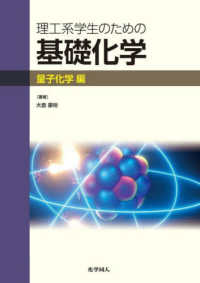- ホーム
- > 洋書
- > ドイツ書
- > Humanities, Arts & Music
- > Music
- > musical equipment
Description
(Text)
Das Werk gliedert sich in zwei große Teile: Das Totenritual und Die jenseitige Welt.Im Totenritual umrahmen archaische Klänge (wie eine tiefe große Trommel und scharfe, schrille Flötenklänge) zwei größere Abschnitte: die bewegte, unruhige Episode des tödlichen Fiebers, und dann die eigentliche Sterbeszene, die als Variationszyklus über das Lied Mein junges Leben hat ein End angelegt ist, das J. P. Sweelinck durch sein Variationswerk überliefert hat.Es folgt der Übertritt in die jenseitige Welt: der einstimmige Gesang der sich vom Irdischen lösenden Seele und die erste Begegnung mit dem Licht.Der zweite Teil wurde angeregt durch Vorstellungen über eine Seelenreise nach dem Tod, wie sie in Nahtod-Erfahrungen und in den Texten verschiedener spiritueller Traditionen beschrieben werden, wobei Dantes Göttliche Komödie als christliche und das Totenbuch der Tibeter als buddhistische Quelle besonders wichtig waren. Das Totenbuch ermahnt, auch die fürchterlichsten Dämonen als eigene Projektionen zu durchschauen und sich auf dem Weg ins Licht nicht beirren zu lassen. Nachdem das Inferno dieser Dämonen durchschritten ist, hellt die Musik sich beim Gang durch das Purgatorium auf und versucht, die Seligkeit der paradiesischen Welt ahnen zu lassen.
(Text)
The work is divided into two large parts: "The Ritual of the Dead" and "The World Beyond".In The Ritual of the Dead, archaic sounds (such as a deep, large drum and sharp, shrill flute sounds) frame two larger sections: the agitated, restless episode of the deadly fever, and then the actual death scene, which is arranged as a cycle of variations on the song My young life has an end, which J. P. Sweelinck handed down through his work of variations.This is followed by the passage into the world beyond: the unanimous song of the soul leaving the earthly world and the first encounter with the light.The second part was inspired by ideas about a soul's journey after death, as described in near-death experiences and in the texts of various spiritual traditions, with Dante's Divine Comedy as a Christian source and the Tibetan Book of the Dead as a Buddhist source being particularly important. The Book of the Dead admonishes us to see through even the most terrifying demons as our own projections and not to be deterred on the path to the light. After the inferno of these monsters has been passed through, the music brightens up as we walk through the purgatory and attempts to foreshadow the bliss of the paradisiacal world.Instrumentation:piano








